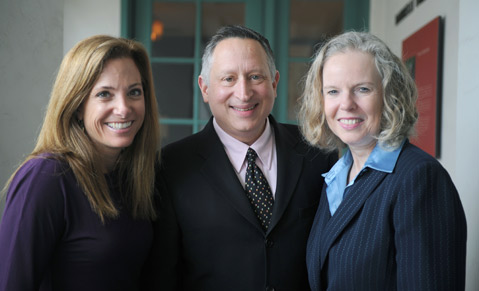NPR Saturation in Santa Barbara?
Four Public Radio Stations Come to Town

Any week now, Santa Barbara’s radio airwaves could have as many as four National Public Radio (NPR) stations vying for the ear space and pledge week donations of listeners countywide. Two months ago, the number of NPR affiliates jumped from two to three when Pasadena-based KPCC — operated by Southern California Public Radio and offering an all-news, all-talk format — acquired 89.9 FM and quietly began broadcasting in Santa Barbara. And two weeks ago, the station began plastering the back of MTD buses with its billboards bearing the slogan, “No rant, no slant.”
In so doing, KPCC managed to edge into Santa Barbara ahead of its longtime rival in the Los Angeles radio market, Santa Monica–based KCRW, best known for its adventurous musical and cultural programming. KCRW was expected to start broadcasting in Santa Barbara this May out of studio space at Antioch University downtown. To that end, KCRW reportedly hired two on-air announcers and one news reporter to produce locally originated content. It also set up equipment in The Santa Barbara Independent offices to allow direct transmission from Independent writers and reporters.
By contrast, KPCC will broadcast from Pasadena using existing station staff, offering an intense focus on regional news but with no locally produced content. These two newcomers will find themselves forced to carve out a listener niche in a public radio market that’s been long served by KCBX out of San Luis Obispo (89.5) and KCLU (102.3) out of Thousand Oaks, raising the urgent question just how much All Things Considered can one town consider?
These preexisting stations are hardly sitting still. KCLU has bumped its broadcast power 25-fold in recent months, and KCBX hired its first news director ever, Randol White, at the beginning of the year. Much of this airwave commotion was sparked when the Santa Barbara Foundation sought to divest itself of KDB — 93.7 on the dial — one of the oldest all-classical stations left in the United States. KDB was until recently a privately owned, for-profit station, but it placed a strain on foundation resources in terms of money, time, and management expertise.
In February, the foundation announced it had sold KDB to KCRW for $1 million. As part of the deal, KDB’s call letters, frequency assignment, and programming would be absorbed by KUSC, which has long provided Santa Barbara listeners an all-classical format from programmers operating in studios in downtown Los Angeles. Beginning in March, KDB began laying off its handful of employees, and this Saturday, KDB programmer Steve Murphy bid a sorrowful farewell to listeners before he and his family left for the East Coast. In this proposed swap, KUSC would, in turn, yield its space at the left end of the dial (88.7 FM) to KCRW, a frequency regarded as the golden goose in this transaction.
Technically, the swap is a relatively simple matter of yanking wires one place and plugging them in someplace else, explained John Franklin, co-owner of Community Radio Inc., which owns and operates the large antenna farm on Gibraltar Peak from which most South Coast radio stations broadcast. But legally, Franklin lamented, it’s been anything but simple. KDB, it turns out, didn’t have a lease with Community Radio but had instead negotiated a real estate easement — a very different legal tool — with Community Radio’s predecessors. That meant a new lease had to be drafted, but according to Franklin, KUSC and KCRW have proved slow to respond with lease language they could live with. In addition, he said KUSC pushed for changes that might increase Community Radio’s vulnerability to legal action in case of natural disasters. On top of that, he said, there’s the unresolved matter of $30,000 in attorneys’ fees thus far.
“This whole thing has just gotten bogged down,” Franklin said. “Every week, we say, ‘Any day now.’ But we’ve been saying that pretty much every day for the last three weeks.” Clearly, it hasn’t worked out optimally for KCRW, either. In June, the station took out big display ads on the back of MTD buses — as KPCC has — but in deference to the slow pace of contract talks, it discontinued those ads indefinitely. Tim Owens, who works both for KDB and for the Santa Barbara Foundation, cautioned that such fits and starts are part of the natural order of business transactions. “It will happen,” he said. “It’s all just part of the process.”



